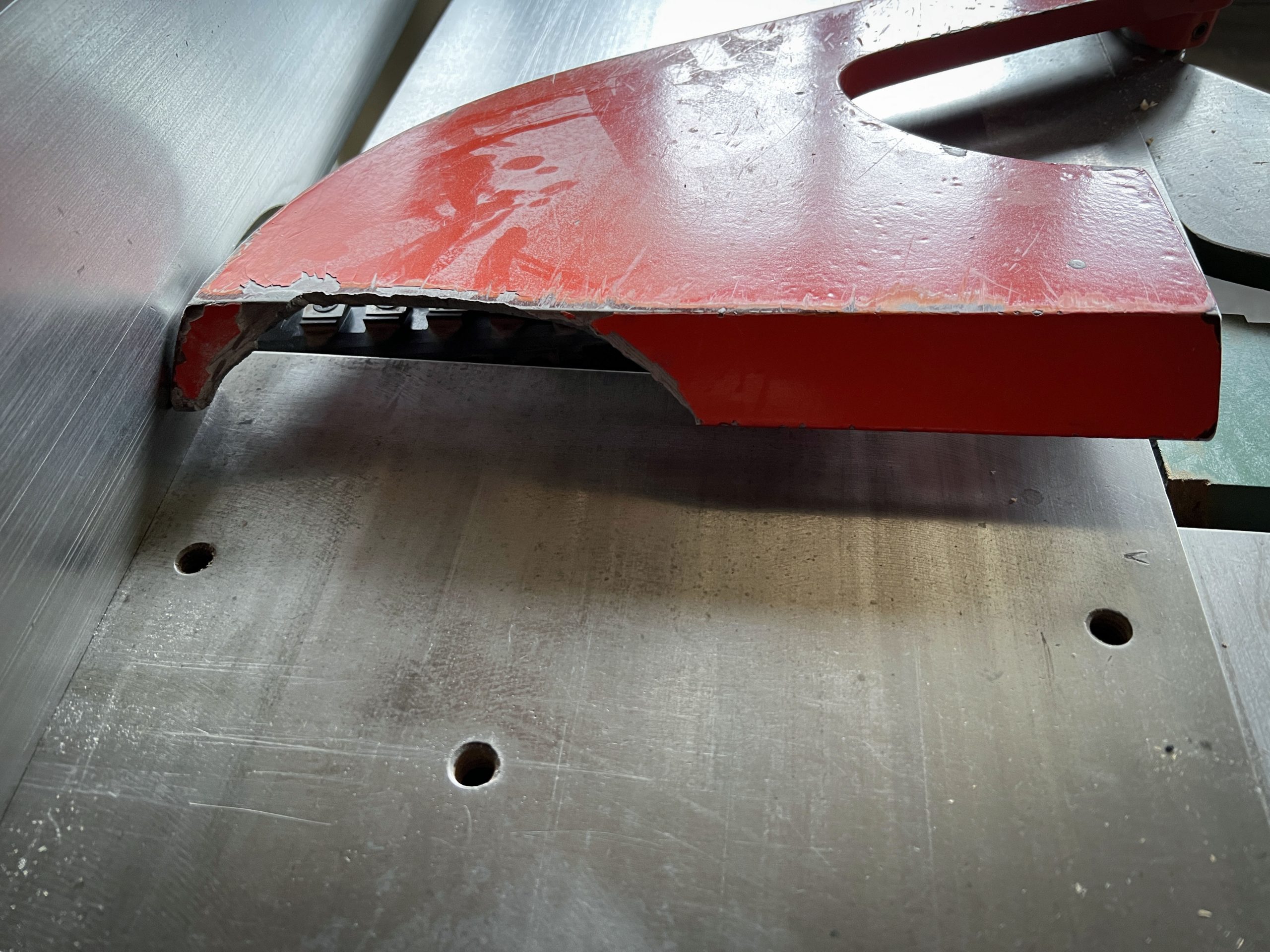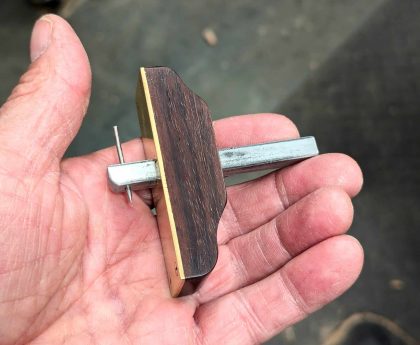The following is by Steve Latta. Steve makes contemporary and traditional furniture, and teaches woodworking at Thaddeus Stevens College of Technology and Millersville University in Lancaster County, Pa. He’s a contributing editor to Fine Woodworking magazine, and is working on a project for Lost Art Press. His Instagram is @steve_latta_woodworking.
About 30 years ago, I took a turning class from the late Rude Osolnik in Akron, Ohio. At that time, Rude was teaching at Berea College and was a master at his craft. It was my first turning class and I had never chucked anything on a lathe prior to it. As Rude was prepping for a demo on spindle turning, he pushed the blank into the tail stock and with the lathe running, he slowly engaged the drive center. With a little finesse of tightening and loosening the stock as it spun, he ended up with the blank humming nicely.
Feeling confident with what I’d observed, I went back to my station, attempted the same technique on the Powermatic #90 assigned to me and promptly launched my blank, leaving a divot in the ceiling. While rubbing the emerging bruise on my hand (not to mention on my ego), a classmate doing his best to suppress a laugh explained that Rude does it that way because he’s been doing it for 40 years. He recommended that I load my blank with the lathe turned off. Despite my stupidity, I survived the self-inflicted forces of natural selection.
That same experience occurred when I started teaching woodworking at a technical college in Lancaster, Penn. I had 16 years in the trade and was a pretty decent cabinetmaker at that point. I even considered myself a “safe” cabinetmaker – until I observed my bright-eyed and bushy-tailed students doing things on the table saw that made me turn white with fear. When asked “Where in the hell did you learn that!?”, the answer was more often than not, “From watching you.” Ouch! That hurt, but it impressed upon me the urgency and necessity of starting with the basics and the essential safe practices for operating a tool, whatever it is.
I love my students. I love their raw energy. Most are between 18 and 25 years of age, male, driven by hormones and with a brain that is far from fully developed. That is not a criticism, just a fact. Their typical solution to most problems is to push it or hit it harder. They do not fully grasp the consequences of a bad choice. They don’t know what the tools really do and certainly do not yet how to use them properly. At that age, most have yet to learn that they themselves are breakable.
Mishaps with hand and power tools can change a life or end a career in a millisecond. Back in the early ’80s, a fellow apprentice was ripping wide, heavy boards on a table saw while wearing gloves. In a blink of the eye, there were four leather fingers resting on the table detached from the glove. They weren’t empty and his career in woodworking was done. Over my 40 years in the trade, I have picked up, scraped up or cleaned up more human tissue than one should. The most recent incident involved small chunks of bone and flesh from the dust chute on a jointer. And, yes, it was gross.

Some folks name their tools. An acquaintance of mine named his 36” bandsaw “Bandosawrus” because of its size and power. I know of a 9-horsepower shaper named “Shredder.” I do not know of any named “Daisy.” Despite that sense of attachment we can get to our tools, I guarantee the emotional bond is strictly one way. There is not a part of my body, any part, that will make the power tools in my shop bog down even a single rpm. The edge of a sharp chisel will pay no mind to the calluses on my hands. The destruction these tools can cause to a body happens in an instance without love nor malice. Although it is easy to blame the tool, “operator error” is often the real problem expressing itself as a lack of diligence or understanding.
These days I often bristle watching videos of various woodworking operations on Instagram or YouTube. I recall a well-known internet personality demonstrate how he cut the dovetailed slot on the bottom of the column for a three-leg pedestal table. Using a shaper with an industrial-size dovetail bit, he ran the first pass right down the center of the mortise, requiring an additional pass on each side of the first to obtain the proper width. He did not show the second cut but skipped to the final pass furthest from the fence. He finished his video sliding the dovetailed foot easily into the column. He was smiling ear-to-ear. I am quite certain that anyone who attempted what had been demonstrated did not smile. The omitted second cut was a climb cut, and a particularly dangerous one at that. I suspect the author discovered that little nightmare making his video. I also suspect that is why he left it out.
Sometimes the videographer even states, “this one will drive the safety police nuts!” In our “rugged sense of individualism” culture, we admire those who break the rules. But sometimes the outcome is ugly. If something isn’t safe, don’t post it. Take a look at your motives for making the video. Is the purpose to relay solid information or rather, out of vanity flavored with ignorance, say “Look at me. Look at me.” Does the number of “likes” and “followers” trump basic safety? Sure, it is possible to turn a short spindle on a table saw combined with a drill. The fact that it’s possible and may even look “cool” garnering thousands of hits does not make it a valid technique and certainly not a safe one. Just because something can be done doesn’t mean that it should be. In my mind, promoting such practices is a crime.
Deviating from accepted safety norms should only come after mastery. Stepping out of what is considered safe should be a conscious choice based on years of experience with a full understanding of what the negative consequences may be. The undefined nuances of what a tradesperson knows are rarely expressed in articles or videos. The subtleties are so ingrained that they are unwittingly taken for granted and hence are inaccessible to the observer. A certain technique might work 99 times out of 100 but the one time it doesn’t might be a bloodbath, literally. In this trade, we are not working with knitting needles but an endless assortment of sharp objects, some of them moving at incredible speeds. Out of respect and concern for viewers in our online ventures, safety rather than sensationalism, should be gold standard, not the number of likes.
– Steve Latta
Editor’s note: If you do get hurt (we sure hope you don’t), make sure you have a well-stocked first-aid kit at hand, and that you know how to use it. And that you know when to seek professional help. Reading “Workshop Wound Care,” by Dr. Jeffery Hill, is a good first step.




